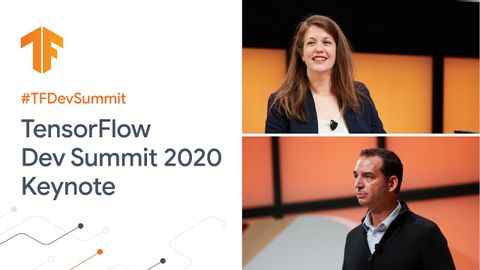TensorFlow開發峰會2020主題演講 (TensorFlow Dev Summit 2020 Keynote)
 沒有此條件下的單字
沒有此條件下的單字US /ɪnˈkrɛdəbəl/
・
UK /ɪnˈkredəbl/
- adj.難以置信;偉大的;令人難以置信的;難以置信的
US /ˈkɑnˌtɛkst/
・
UK /ˈkɒntekst/
- n. (c./u.)上下文 ; 背景 ; 來龍去脈;背景;環境;語境
US /ɪmˈpruv/
・
UK /ɪm'pru:v/
- n. (c./u.)大小;規模;魚鱗;比例;等級;標尺
- v.t./i.測量;攀登;魚鱗

